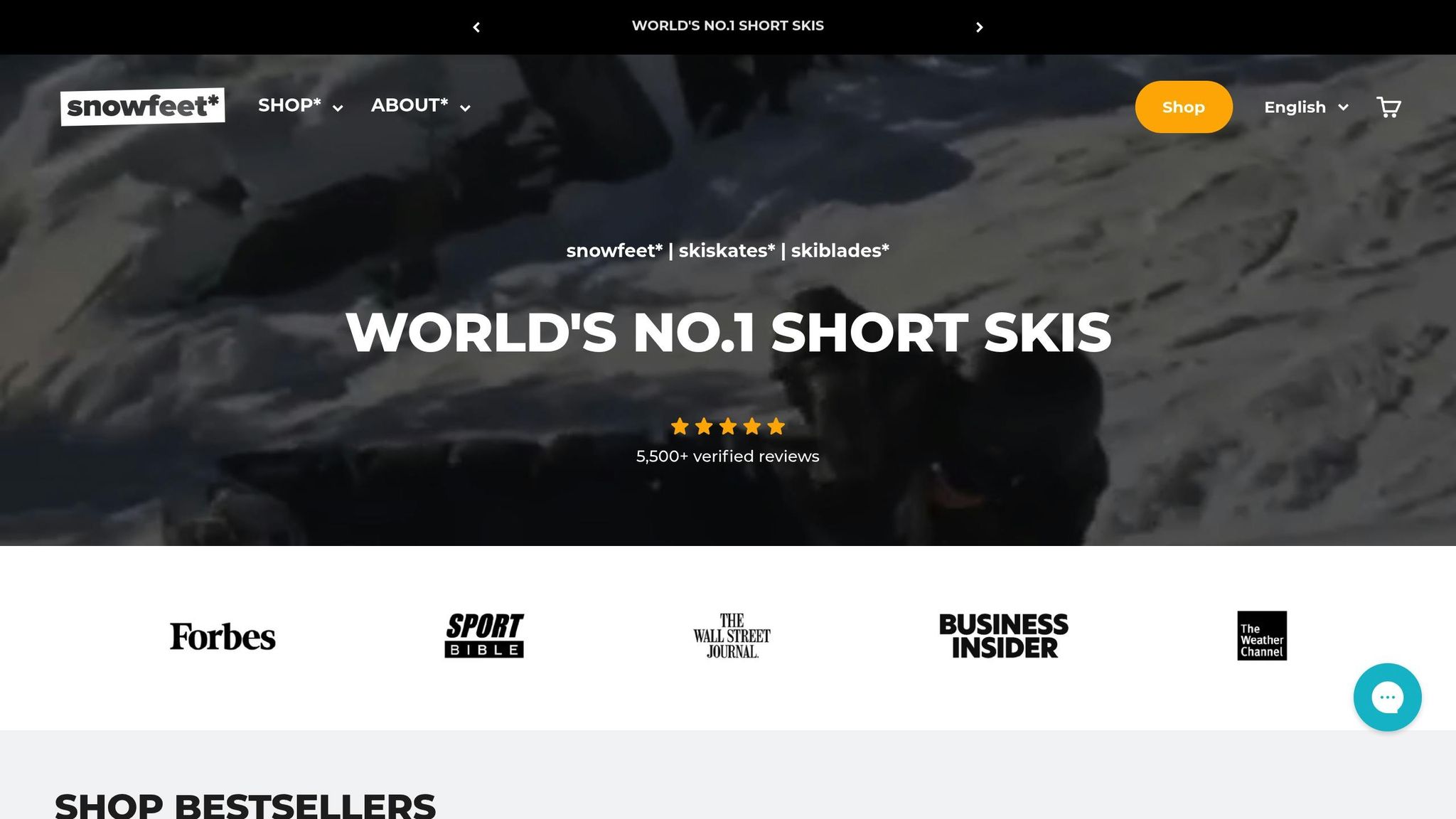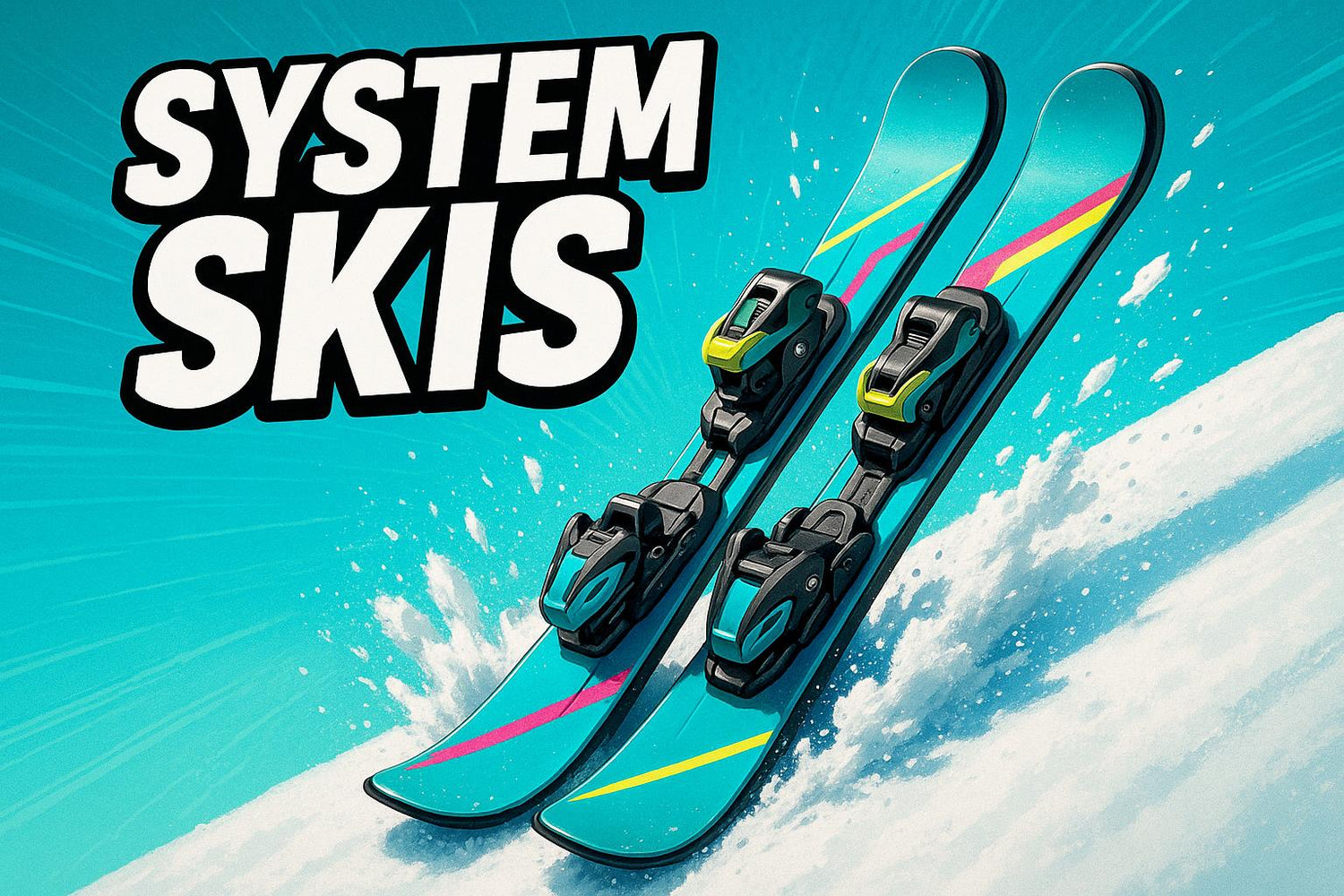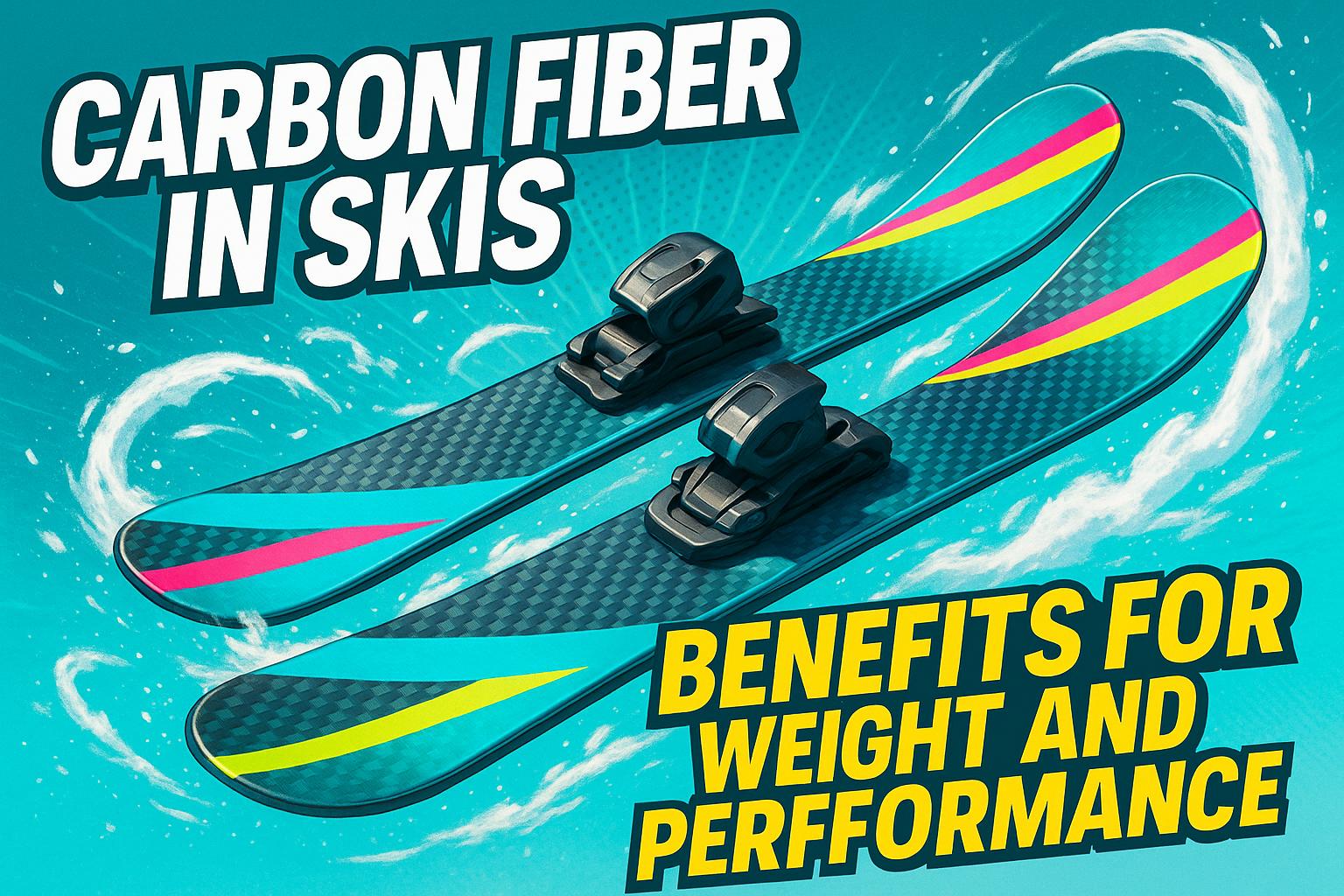Looking for skis? Here’s the quick breakdown:
-
System skis (like Rossignol or Atomic):
- Great for groomed slopes and carving.
- Require ski boots and fixed bindings.
- Bulky, expensive ($600–$1,500+ including boots), and less versatile.
-
Snowfeet products (mini ski skates and skiblades):
- Compact and portable (as small as 17 inches).
- Work with regular winter boots.
- Affordable ($150–$599) and beginner-friendly.
- Usable on ski slopes, hiking trails, backyards, or terrain parks.
Quick Comparison
| Feature | System Skis | Snowfeet |
|---|---|---|
| Performance | Best for groomed slopes and speed. | Easy turns, jumps, and versatile use. |
| Portability | Heavy (5–8 ft long). | Lightweight (17–39 inches). |
| Flexibility | Needs ski boots. | Works with regular winter boots. |
| Price Range | $600–$1,500+ (with boots). | $150–$599. |
| Learning Curve | Steeper for beginners. | Easier to learn. |
| Terrain Versatility | Limited to specific slopes. | Usable on multiple terrains. |
Bottom line: If you want traditional skiing on groomed slopes, system skis are a solid choice. But for portability, flexibility, and all-around winter fun, Snowfeet offers a simpler, cheaper, and more versatile option.
Flat Vs System Skis by Skis com
1. System Skis
System skis have long been the go-to choice for traditional skiing, designed specifically for smooth, carved turns on groomed slopes. Brands like Rossignol, Atomic, Elan, and Head have perfected these skis to excel on packed snow, making them a favorite for classic alpine skiing enthusiasts.
But here's the catch: they’re not exactly versatile. System skis keep you locked into traditional alpine techniques, limiting what you can do. Compare that to Snowfeet's 99 cm skiblades, which let you carve, jump, and even tackle powder up to 4 inches deep. They bring a whole new level of fun and flexibility to the slopes.
Portability
Let’s talk about portability - because lugging around heavy, oversized skis isn’t exactly fun. Traditional skis, usually 150–200+ cm long, are a hassle to transport. Fitting them in your car trunk or carrying them on public transport? Not easy. Snowfeet changes the game with their compact skiskates, which are just 44 cm long - the shortest skis in the world. Even the 99 cm skiblades are far easier to handle. You can toss them into a backpack or take them on a hike, something you’d never dream of doing with regular skis.
Flexibility
System skis also come with a major limitation: their integrated design doesn’t allow you to switch up boot types or adjust bindings. Snowfeet products, on the other hand, are all about flexibility. They work with any winter boots, so there’s no need for special ski boots. This makes them perfect for spontaneous slope sessions or backcountry adventures without all the extra gear.
Price
Now, let’s look at the price. System skis might seem convenient with their pre-attached bindings, but they’re really only optimized for groomed resort slopes. Plus, you’ll need ski boots and lift tickets, which add to the cost. Snowfeet’s skiskates start at $390 and offer way more bang for your buck. You can use them at resorts, in the backcountry, or even for casual snow play in your neighborhood. They’re a cost-effective, multi-use option that fits the needs of today’s skiers looking for more freedom and fewer limits.
2. Snowfeet* Skiblades and Skiskates

Snowfeet* products are changing the game for skiers by offering a fresh take on versatility and performance. Unlike traditional system skis from brands like Rossignol or Atomic that cater to specific skiing styles, Snowfeet* opens up a world of possibilities for winter sports enthusiasts.
Performance
When it comes to performance, Snowfeet* skiblades and skiskates bring something unique to the table. The skiblades, available in 65 cm and 99 cm lengths, are designed for easy control, making them a great choice for beginners or anyone looking for a relaxed ride down the mountain. They’re perfect for tight, quick turns and shine on crowded slopes, in terrain parks, or even on challenging terrains like moguls and powder. On the other hand, the 44 cm skiskates offer a whole new level of agility. Their compact size allows for jumps, twists, and tricks that are hard to pull off with traditional skis, giving you a fast and nimble experience on the slopes. Plus, their portability only adds to their appeal.
Portability
Speaking of portability, Snowfeet* skiskates are a dream. At just 44 cm long and weighing only 3.5 lbs (1.6 kg) per pair, they’re incredibly easy to carry around. Whether you’re heading out for a hike, hopping on public transport, or planning a spontaneous snow day, their compact size makes them a hassle-free companion. They’re even small enough to tackle narrow hiking trails where regular skis wouldn’t stand a chance.
Flexibility
Snowfeet* products don’t just perform well - they’re also incredibly flexible. Forget about needing specialized ski boots. These skiblades and skiskates work with your regular winter shoes, snowboard boots, or even ski boots. This means no extra spending on dedicated footwear. Beyond that, they’re built for a variety of winter activities. Whether you’re hitting the resorts, exploring cross-country trails, sledding, or just having fun in your backyard, Snowfeet* adapts to your plans.
Price
When it comes to cost, Snowfeet* is hard to beat. Priced between $150 and $599, they’re a more affordable option compared to traditional system skis. For instance, Rossignol skis typically range from $400 to $900, while Atomic skis start at $400 and can go beyond $1,000. On top of that, Snowfeet* saves you from spending an extra $200–$500 on ski boots. With these savings, you can enjoy more winter fun without breaking the bank. Snowfeet* is all about making snow sports more accessible, fun, and budget-friendly.
sbb-itb-17ade95
Pros and Cons
When you stack up traditional system skis against Snowfeet*, the differences become pretty clear. Here’s a quick side-by-side look at how they compare across some key factors:
| Factor | Traditional System Skis (Rossignol, Atomic, Elan, Head) | Snowfeet* Products |
|---|---|---|
| Performance | Engineered for speed and deep-snow performance, perfect for carving through powder or cruising down groomed runs. | Built for easy handling and quick turns on groomed trails, moguls, and terrain parks. |
| Portability | Long and heavy (typically 5–8 ft), requiring roof racks or ski bags for transport. | Super compact: skiskates are about 17 inches, while skiblades range from 26–39 inches - easy to carry and store. |
| Flexibility | Require specialized ski boots, which can set you back $200–$500, and are mainly limited to downhill skiing. | Work with regular winter shoes, snowboard boots, or ski boots - no extra gear needed. |
| Price Range | Costs add up quickly, ranging from $600 to $1,500+ once you factor in boots. | A budget-friendly option, priced between $150 and $599 for a complete setup. |
| Learning Curve | Can feel overwhelming for beginners due to the steep learning curve. | Beginner-friendly, offering easy control and faster mastery. |
| Terrain Versatility | Shine in specific conditions like high-speed groomed slopes or deep powder. | Work just about anywhere - ski hills, hiking trails, even your backyard. |
Traditional skis are fantastic for specific scenarios like racing down a groomed slope or floating through fresh powder. But if you’re after something lighter, easier to use, and more versatile, Snowfeet* makes a strong case. They’re perfect for anyone looking for spontaneous, hassle-free winter fun.
Conclusion
Snowfeet* products bring a fresh and practical alternative for recreational skiers and travelers, offering a great balance of affordability and convenience compared to traditional skis from brands like Rossignol, Atomic, Elan, and Head. As mentioned earlier, their pricing makes them a budget-friendly option without sacrificing quality or requiring pricey, specialized gear.
One of the standout features of Snowfeet* is their compact design. With sizes ranging from 15 to 39 inches, they’re incredibly portable - no more lugging around heavy, bulky equipment. Whether it’s a last-minute weekend getaway or a quick trip to the local sledding hill, Snowfeet* gear fits right into your plans without the hassle.
Another big win for Snowfeet* is their versatility. You can strap them on with regular winter shoes, snowboard boots, or ski boots - no need to buy anything extra. Plus, they’re not just confined to ski slopes. Take them to hiking trails, sledding hills, terrain parks, or even use them in your backyard after a fresh snowfall. They’re as flexible as your winter adventures.
Users are raving about their experience:
"I will never go back to the original skis", says Andrew B. Vanessa from the UK adds, "Easily one of the best purchases I have ever made to date."
Snowfeet* also shines in accessibility. With a minimal learning curve, they’re perfect for beginners who want to dive into the fun without spending hours mastering the basics. For anyone prioritizing ease, affordability, and versatility over high-speed downhill thrills, Snowfeet* is a game-changer. While traditional skis still have their place for alpine racers and powder enthusiasts, Snowfeet* is redefining how people enjoy winter sports.
FAQs
How do system skis compare to Snowfeet products in performance and versatility?
System skis, like those from brands such as Rossignol or Atomic, are built with one thing in mind: high-speed carving and rock-solid stability on groomed runs. They’re fantastic for traditional alpine skiing, where smooth turns and precision are key. But when it comes to handling varied terrains or dabbling in freestyle, they’re not exactly the most flexible option.
Snowfeet products, however, bring something entirely different to the table. Their compact and lightweight design makes them a dream for tackling all sorts of terrain - whether it’s parks, powder, or even bumpier, less predictable slopes. They’re easy to carry, simple to maneuver, and offer a playful, creative experience that system skis just can’t compete with. If you’re after gear that’s versatile, portable, and still delivers on performance, Snowfeet might just be your new best friend.
How does the cost of system skis compare to Snowfeet products when factoring in additional gear like ski boots?
Comparing Costs: Traditional Skis vs. Snowfeet Skiblades
Traditional ski setups, which include skis with integrated bindings and ski boots, can set you back anywhere from $600 to over $1,600. The price varies depending on the brand and quality, with names like Rossignol, Atomic, and Head often commanding a hefty upfront investment. And that’s before you even factor in the cost of boots and other essential gear.
Now, let’s talk about Snowfeet skiblades. These offer a much more wallet-friendly option, with prices ranging between $140 and $650. Here’s the kicker: you don’t need to splurge on bulky or pricey ski boots. Snowfeet are designed to work with most standard footwear, making them not just easier on your budget but also a lighter, more practical choice for skiers who value simplicity and convenience.
Are Snowfeet products a good option for both beginners and experienced skiers looking for a fun and versatile way to enjoy winter sports?
Snowfeet products are a great pick for anyone, whether you're just starting out or you've been skiing for years. Their lightweight, compact design makes them super easy to handle, giving beginners a chance to build confidence fast. For seasoned skiers, the agility and portability of Snowfeet open up a whole new way to enjoy the slopes - offering a fun alternative to traditional skis or snowboards and making it easy to explore different terrains and styles.
If you're looking to mix things up this winter, Snowfeet strikes the perfect balance of practicality, fun, and performance. They’re a sleek, modern option for anyone who’s all about making the most of their time on the snow.

































Leave a comment
This site is protected by hCaptcha and the hCaptcha Privacy Policy and Terms of Service apply.